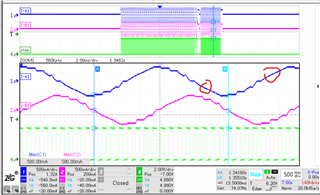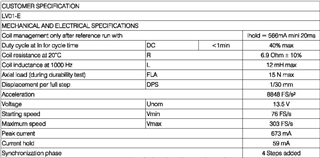Hello expert,
In low input voltage(9V) and high step frequency (1.18Khz), the inductor current can not rise/fall on time. Below my question:
1. Is this an issue? What is the risk?
2.How to improve? The motor, step frequency and the input voltage are requirement from the customer and can not be changed.



